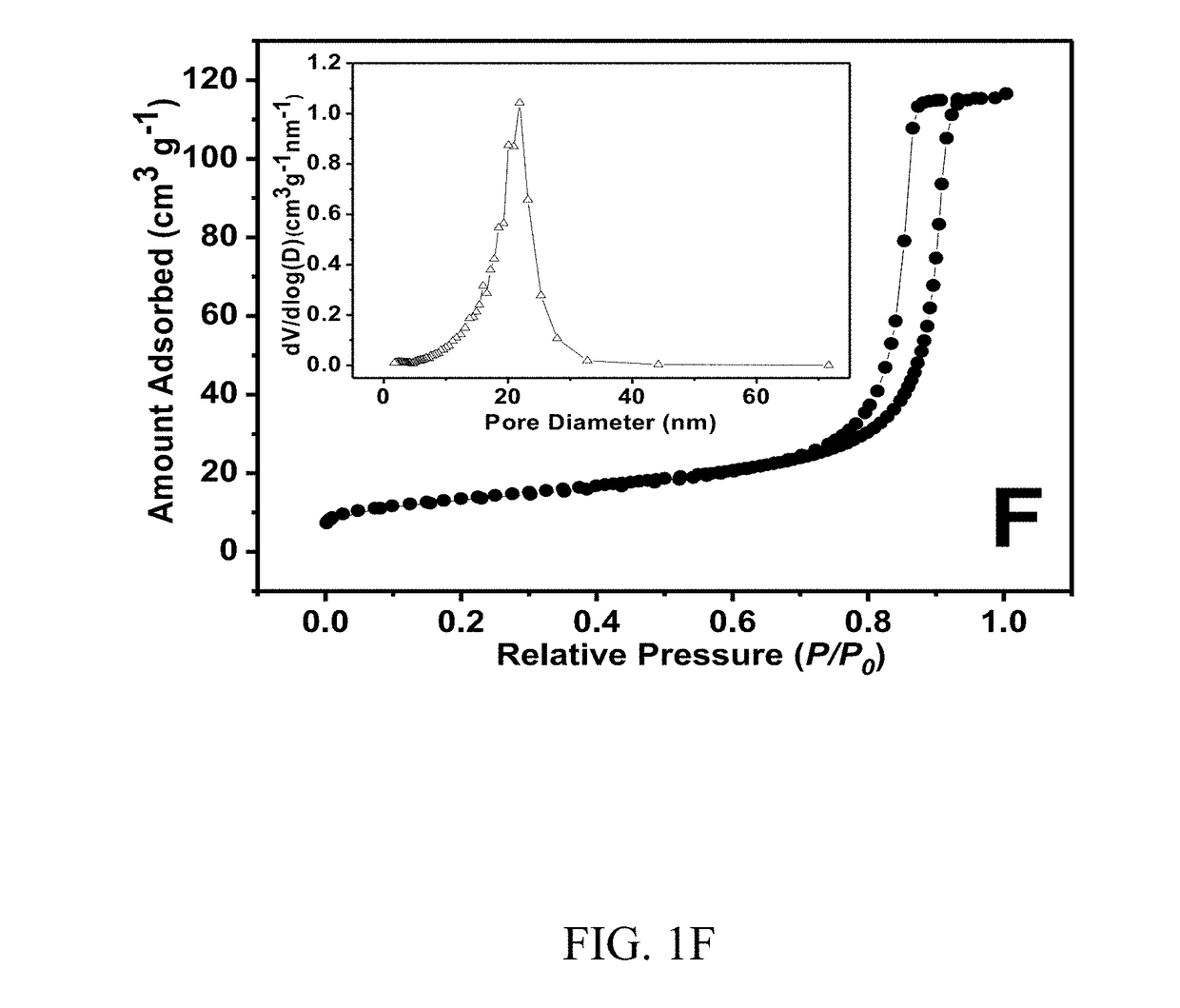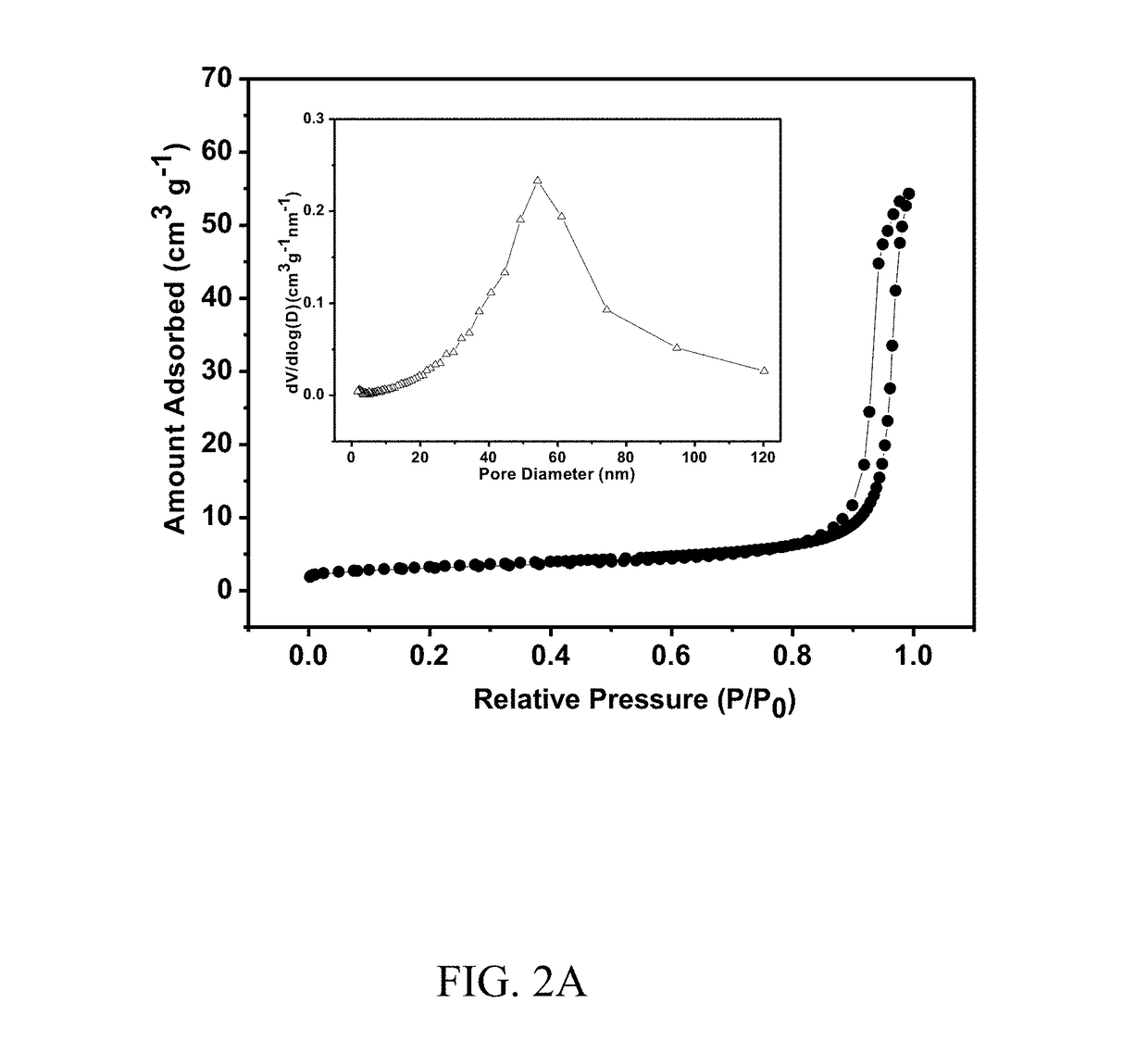Nanoporous titanium niobium oxide and titanium tantalum oxide compositions and their use in anodes of lithium ion batteries
a lithium ion battery and titanium tantalum oxide technology, which is applied in the field of titanium tantalum oxide compositions and anode compositions of lithium ion batteries, can solve the problems of low storage capacity of lto, limited charging rate, and the inability of libs using graphite as anode materials to meet the stringent requirements of these applications, and achieve high reversible capacity, high coulombic efficiency, and high retention capacity
- Summary
- Abstract
- Description
- Claims
- Application Information
AI Technical Summary
Benefits of technology
Problems solved by technology
Method used
Image
Examples
examples
Preparation and Analysis of Nanoporous Titanium Niobium Oxide Framework Materials
Synthesis of Nanoporous TiNb2O7 Framework Material
[0071]Nanoporous TiNb2O7 samples were synthesized using a sol-gel method. In a typical synthesis, 4.8 g of the surfactant templating agent F127 was dissolved in a mixture solution of 90 mL ethanol, 6 mL HCl, and 7 mL of HOAc. After stirring for 1 hour, 20 mmol of niobium ethoxide (Nb(OC2H5)5) and 10 mmol tetrabutyl orthotitanate (Ti(OC4H9)4) were added into the solution. After stifling vigorously for 1 hour, the mixture was transferred into a Petri dish and dried at 60° C. for 12 hours. As-synthesized hybrid materials were calcined at the following different temperatures: 600° C., 700° C., 850° C., and 1000° C. in air for 3 hours (ramp rate of 2° C. / min) to obtain TiNb2O7 samples designated as TNO-600, TNO-700, TNO-850 and TNO-1000, respectively. Nanoporous TiNb1.8Ta0.2O7 (TNTO) was prepared by the same method as nanoporous TiNb2O7 samples, except that 1...
PUM
| Property | Measurement | Unit |
|---|---|---|
| particle size | aaaaa | aaaaa |
| particle size | aaaaa | aaaaa |
| pore size | aaaaa | aaaaa |
Abstract
Description
Claims
Application Information
 Login to View More
Login to View More - R&D
- Intellectual Property
- Life Sciences
- Materials
- Tech Scout
- Unparalleled Data Quality
- Higher Quality Content
- 60% Fewer Hallucinations
Browse by: Latest US Patents, China's latest patents, Technical Efficacy Thesaurus, Application Domain, Technology Topic, Popular Technical Reports.
© 2025 PatSnap. All rights reserved.Legal|Privacy policy|Modern Slavery Act Transparency Statement|Sitemap|About US| Contact US: help@patsnap.com



